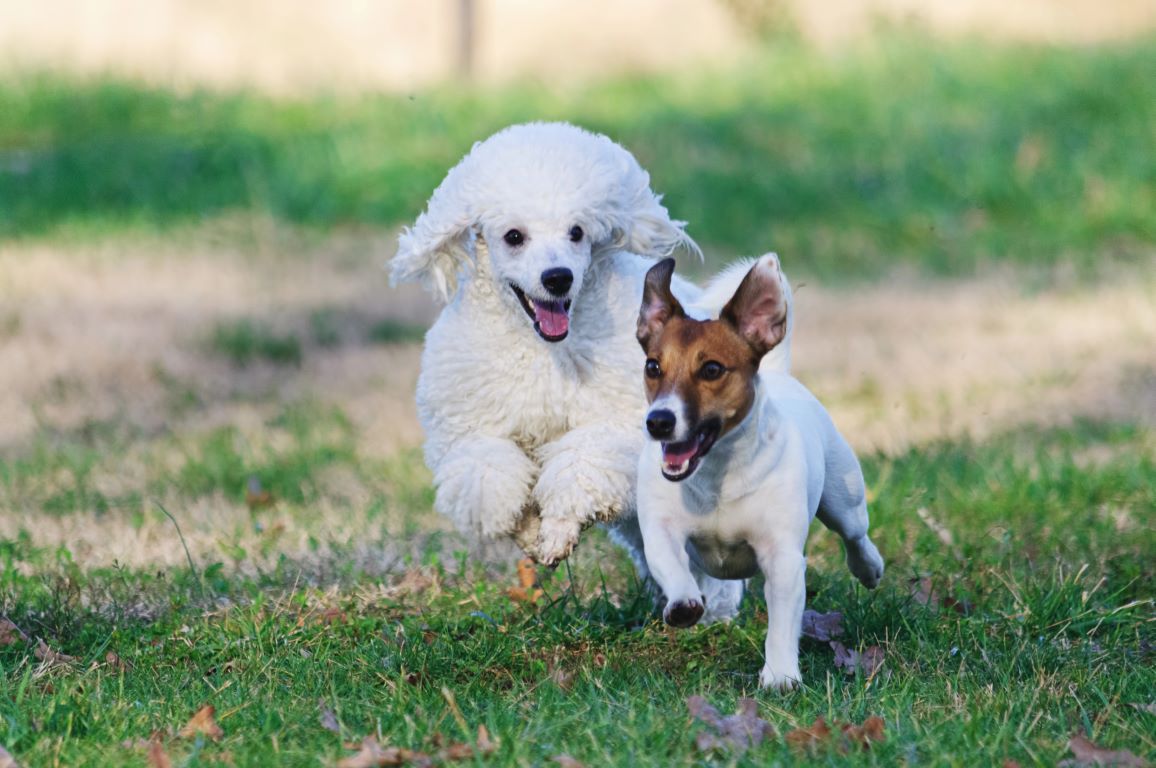
Mastering off-leash skills and reliable recall is paramount to ensuring the safety and enjoyment of your canine clients. This article looks at off-leash training and recall techniques, providing invaluable insights for novice dog walkers embarking on their career journey.
The Importance of Off-Leash Training
Off-leash training is a crucial aspect of canine management that offers many benefits for both dogs and their handlers. It fosters a stronger bond between human and hound, whilst simultaneously promoting physical and mental stimulation. Dogs allowed to roam freely during walks experience heightened sensory engagement, leading to improved overall well-being. Moreover, off-leash exercises can help mitigate behavioural issues stemming from pent-up energy or frustration.
Assessing a Dog’s Readiness for Off-Leash Walking
Before venturing into off-leash territory, it’s imperative to gauge a dog’s suitability for such freedom. This assessment should encompass various factors, including the dog’s temperament, level of obedience training, and environmental awareness. A thorough evaluation of these elements will help determine whether a dog is prepared for the responsibilities that come with off-leash privileges.
Establishing a Solid Foundation
The cornerstone of successful off-leash walking lies in establishing a robust foundation of basic obedience. This entails mastering fundamental commands such as ‘sit’, ‘stay’, and ‘come’. Consistency and positive reinforcement are key to instilling these behaviours. Utilising a variety of training methods, including clicker training and reward-based systems, can expedite the learning process.
Perfecting the Art of Recall
Recall, the ability to summon a dog back to you on command, is arguably the most critical skill for off-leash success. Developing a bulletproof recall requires patience, persistence, and a structured approach. Begin in low-distraction environments, gradually increasing the level of challenge as the dog’s responsiveness improves. Employing high-value treats and effusive praise can significantly enhance recall reliability.
Incorporating Dog Whistle Training
Dog whistles can be a valuable tool in your off-leash training arsenal. Dog Whistles produce a high-pitched sound that’s often imperceptible to human ears but can be heard by dogs over long distances. When used consistently, a dog whistle can become a powerful recall cue. Begin by associating the whistle sound with positive experiences, such as treats or playtime. See a Helpful Links below.
To keep a dog responsive to recalls, make the end of playtime positive.
Start by using a long training line.
Use a whistle to call in the dog.
Combine with enthusiatic call-in actions such as welcoming, open arms, crouching down, and your ‘come’ command.
When the dog comes to you, offer a tasty treat* and calmly attach the leash.
Wait about 15 seconds while talking to the dog, telling them that they are a ‘good boy/girl’. Give another treat and release the dog to play again.
This approach prevents the dog from associating the whistle with the end of fun, encouraging them to come when called in the future.
* Treat only with owner’s permission, otherwise, use lavish praise instead. Treats should be small. You can phase out treats once recall is established.
Gradually increase the distance and distractions when practising whistle recalls. The distinct sound of a dog whistle can cut through ambient noise, making it particularly useful in busy park environments or when working with multiple dogs simultaneously.
Navigating Potential Pitfalls
Off-leash walking is not without its challenges. Common pitfalls include dogs becoming overly excited or distracted, ignoring commands, or even running off. Anticipating these issues and implementing proactive strategies is essential. This may involve utilising long-lines during the transition phase or employing specific recall games to maintain engagement.
Legal and Ethical Considerations
As a professional dog walker, it’s crucial to be well-versed in local laws and regulations pertaining to off-leash dogs. Many areas have specific restrictions or designated off-leash zones. Additionally, consider the ethical implications of off-leash walking, particularly in shared public spaces. Always prioritise the safety and comfort of both your pack and other park users.
Advanced Off-Leash Techniques
Once a solid foundation has been established, more advanced off-leash techniques can be introduced. These may include teaching dogs to maintain a specific perimeter around their handler or responding to non-verbal cues. Such advanced skills not only enhance safety but also showcase your professionalism as a dog walker.
Maintaining and Reinforcing Off-Leash Skills
Off-leash and recall abilities require ongoing maintenance and reinforcement. Regular practice sessions, even with well-trained dogs, are essential to prevent skill degradation. Incorporate recall exercises into daily routines and continue to challenge dogs with new environments and distractions to ensure their skills remain sharp. This includes regularly practising whistle recalls to maintain their effectiveness.
Conclusion
Mastering off-leash walking and recall is a transformative journey that elevates the professional dog walker’s skillset. By understanding the nuances of these techniques, including the strategic use of dog whistles, and dedicating time to their development, you’ll not only ensure the safety of your canine clients but also enhance their overall walking experience. Remember, the path to off-leash excellence is ongoing, requiring continuous learning and adaptation to each dog’s needs.
Helpful Links
How to use a dog whistle
https://youtu.be/pP72u9D2XSw?si=XLDtuXwLo1ixIJkW




